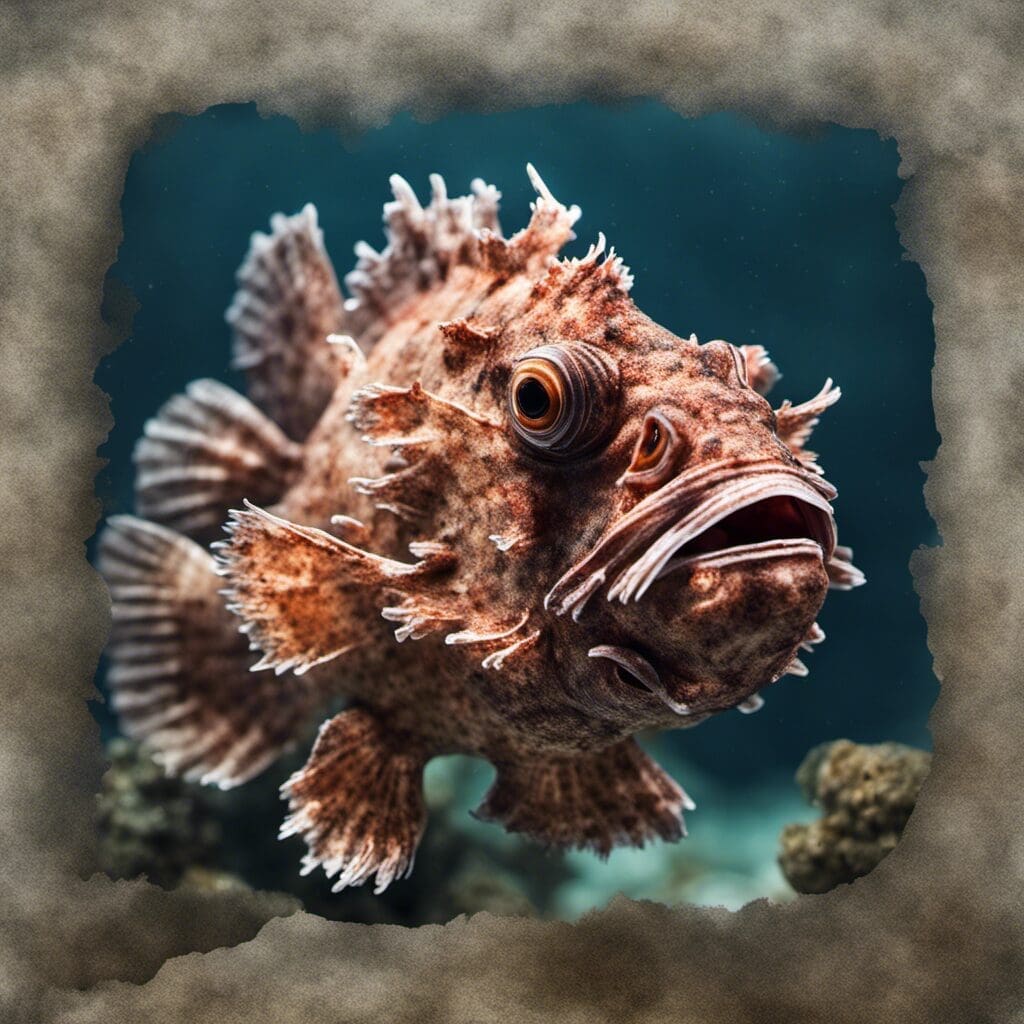Introduction
Species Name and Family
Scorpionfish belong to the Scorpaenidae family and the Scorpaenidae genus. They are also often referred to by fishermen as rockfish.
Conservation Status
Current Status
Most species of scorpionfish are currently listed as of least concern on the conservation status scale. There are no major threats which might affect the population and survival of scorpionfish as a whole.
Conservation Efforts
Despite being a least concern species, conservation efforts exist in various regions to maintain responsible fishing practices to ensure the sustainable use of the species. There are also measures taken to protect their habitats from environmental threats such as water pollution.
Statistics
| Average | Range | |
|---|---|---|
| Length | 20 cm | 10-37 cm |
| Weight | 1 kg | 0.5-2 kg |
| Average Lifespan | 15 years |
Distribution
Regions/Countries
Scorpionfish can be found in the Pacific Ocean, particularly along the coasts of Japan, China and Australia. They are also present in the Atlantic Ocean, especially off the coast of Africa and parts of South America.
Migration Patterns
Most species of scorpionfish tend not to migrate but stay within their preferred habitats and depth ranges.
Habitats
Water Type, Depth Range, Temperature Range
Scorpionfish inhabit saltwater environments and prefer deep, rocky areas. They can be found at depths ranging from 20 to 200 meters. These fish are comfortable in a wide temperature range, but exhibit preference for colder oceanic waters.
When and Where to See
Seasonal patterns
Scorpionfish can be seen throughout the year but are more visible during the summer months.
Time of Day
Scorpionfish are predominantly nocturnal and so are most active and easier to spot at night.
Best Fishing Locations
Top 10 Places
- Tokyo Bay, Japan
- Bohai Sea, China
- Great Barrier Reef, Australia
- Benguela, Angola
- Salvador, Brazil
General Tips
Scorpionfish often hide in rocky areas or coral reefs and are masters of camouflage. Look for these habitats and watch carefully.
How to Catch
Preferred bait or lures
Use small fish or shrimp as live bait for best results.
Fishing Techniques
Bottom fishing or trolling are the recommended techniques to catch scorpionfish. Fly fishing is less effective due to their depth preference.
Best Time
The best time to catch scorpionfish is at dusk or during the night when they come out of their hiding places to feed.
Identification Guide
Physical Characteristics
Scorpionfish are well recognized by their large, spiny pectoral fins and venomous dorsal fins. Their coloration can vary significantly depending on the species and habitat, but they are often red, brown or gray.
Culinary
How to Cook
Scorpionfish make for a tasty dish when properly prepared. The fish must be cleaned carefully to avoid the venomous spines. It can be grilled, baked or made into soups and stews.
Taste Profile
The flesh of the scorpionfish is tender, white and has a fairly mild, slightly sweet flavour.
Nutritional Information
This fish is rich in protein and is a good source of essential minerals and vitamins.
Recipes
One popular recipe is grilled scorpionfish with a garlic and herb butter. Another crowd favorite is scorpionfish soup with vegetables and herbs.
Additional Information
Behavior
Scorpionfish are ambush predators. They blend in with their surroundings and wait for prey to come close before attacking.
Predators and Threats
Natural predators of the scorpionfish include larger fish and seabirds. Human-induced threats include pollution and overfishing.
References and Further Reading
Sources
Recommended readings
National Geographic – Scorpionfish

